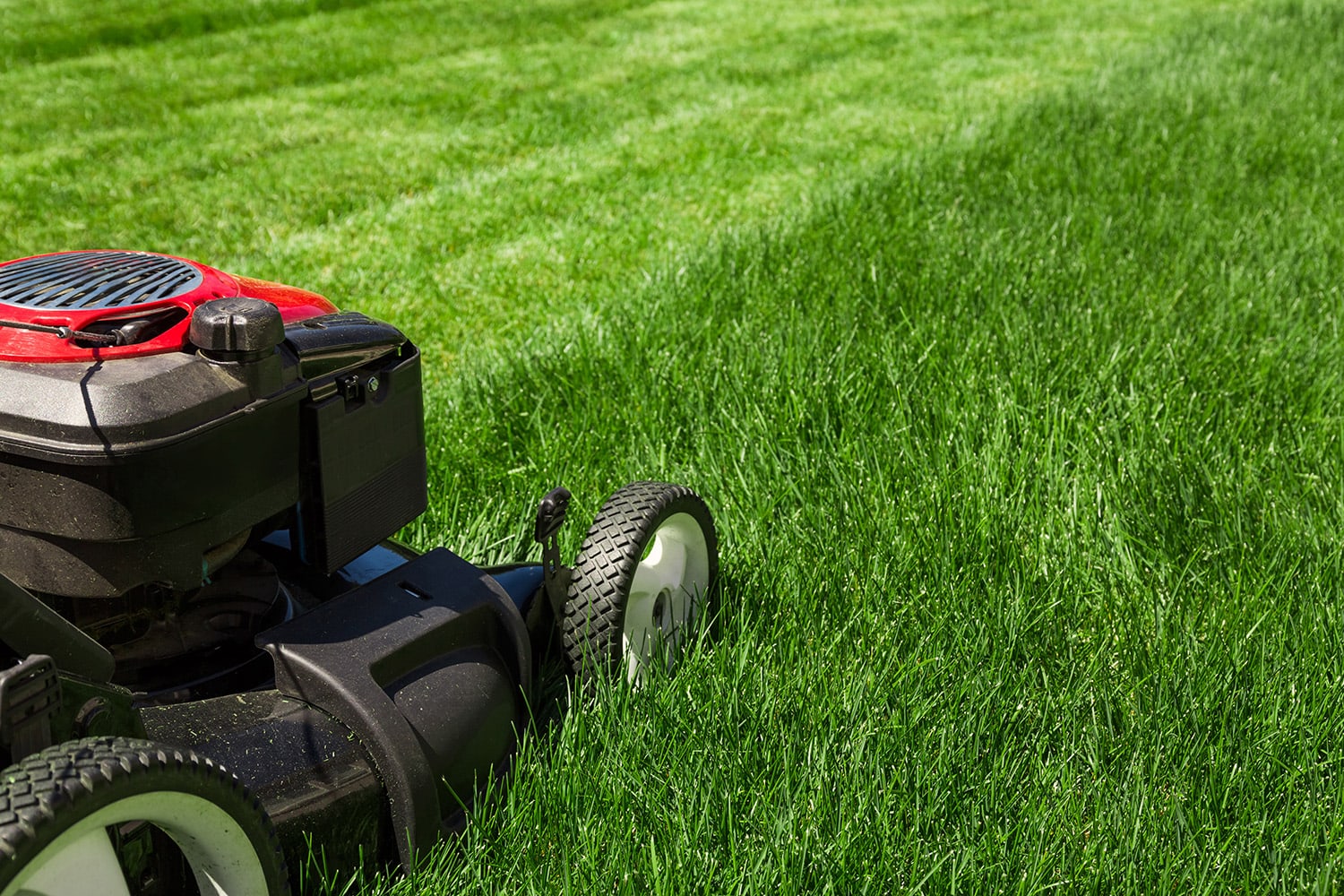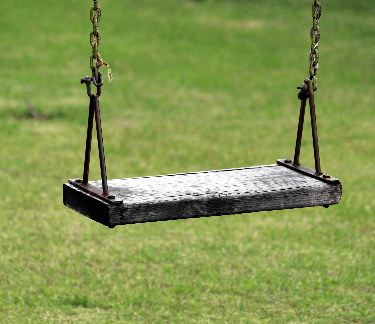
Summer is the best time live life outside, and the foundation for enjoying your outdoors is a beautiful lawn. Spending time outside to create and maintain thick, healthy grass is important, but not nearly as important as spending time with family and friends. Summer lawn care requires more than just watering and mowing weekly. For your lawn to be in top shape, you’ll need to get rid of weeds and pests, and make sure you’re feeding the grass with the nutrients it needs to keep your lawn green in the summer heat. Here are a few tips on how you can make your summer lawn care a breeze:
The Keys to Summer Lawn Care
When making a summer lawn care plan, it’s best to think of the season in phases: Early, mid, and late summer. How you care for your lawn varies according to the phase. For example treating for pests like grubs, is best done in the early summer before they have a chance to become established and damage the roots of your grass. A typical summer lawn care schedule to keep your lawn green in summer heat might look like this:
Early Summer Lawn Care Tips
- Fertilizing your lawn in early summer. Work with a lawn care company to apply summer lawn fertilizer. Fertilizer will support growth needed to maintain its health this summer.
- Treating for summer pests and weeds. Your lawn care company can apply weed control only when and where it’s needed. This will ensure you kill the weeds without harming the surrounding grass. Also be on the lookout for pests seen in the summer months. Not all insects will damage your lawn. Proper identification of lawn pests such as grubs and turf caterpillars is important. Look for feeding symptoms throughout the summer. If you see unusually high feeding activity or if your lawn begins to wilt in patches or form bare patches, call you lawn care company immediately as it could be signs of an insect infestation.
- Mowing the grass at a high length. This helps ensure that the roots reach deep and the soil stays moist to reduce the need for watering. Leave the grass clippings on the lawn, as they will break down and help feed the grass.
- Heavy watering. Water deeply to help support root growth.
Mid-Summer Lawn Care Tips
- Feed and fertilize, if necessary. Your lawn care company will create a lawn plan for your specific grass type and region of the country. They can help you identify if your lawn is need of a mid-summer feeding to support healthy growth. Warm season grasses require fertilizer in the summer to promote dense, healthy growth.
- Keep mowing at a high length and keep blades sharp.. Dull blades can harm grass, and cause blade damage. Avoid mowing cool season grasses on hot days. Warm season lawns will require more frequent mowing in summer to avoid scalping.
- Water deeply. Ensure that the grass is getting at least one inch of water per week.
Watering Your Lawn
Warm temperatures and dry weather can limit or eliminate soil moisture needed for lawn health. Lack of soil moisture can reduce the root and shoot growth, cause grass leaf blades to wilt and change the once lush green turf color to a pale green or brown. Grass plants suffering from moisture stress can be prone to other problems including weeds and pests. Assuming that your region is not experiencing drought conditions or under water restrictions, the best way to maintain a healthy summer lawn is to water it deeply and infrequently. Thorough watering once or twice a week is better than frequent, light sprinkling.
In the summer, plan to water your lawn once a week for about an hour to give your lawn an inch of moisture. Measure water with a rain gauge or place a tuna can under your sprinkler system to catch water. The can is about an inch high, so once it’s full, you’re done watering. You can measure the depth of the water by how easy it is to push a dowel or screw driver into the earth to the proper depth. Too hard – water deeper. Too easy - you may be overwatering your lawn.
Make sure the irrigation system is doing its job. Uniform watering can help avoid brown spots and keep turf healthy from root to tip. Check the irrigation system weekly to make sure each section of the turf is being supplied with the appropriate amount of water.
Tips for watering your lawn in the summer:
- Be respectful of water restrictions if present in your community.
- The best time to water your lawn in the summer is in the early morning hours, ideally before sunrise. This way, the water has a chance to soak in before the sun dries it out.
- Carefully place your sprinkler or hose to avoid watering the street and sidewalks. This is just a waste of water.
- Monitor the watering to make sure that certain areas aren’t becoming too saturated.
- Don’t forget to account for rain when watering your lawn. If you have had an especially rainy week, you won’t have to water your lawn as much – or at all, if the ground is still moist.
- If you have an irrigation system adjust your timers as weather changes and inspect for damaged or leaking heads.
Fertilizing Your Lawn in the Summer
Once your lawn turns green in the late spring/early summer, timely applications of summer lawn fertilizer can help give it a boost to grow strong and healthy throughout the rest of the season. Your lawn care company should use a fertilizer that’s formulated for summer feeding. Properly applied, summer lawn fertilizer helps your lawn withstand the heat and drought conditions of summer.
Experts recommend fertilizing cool season grasses in the spring and the fall, and warm season grasses in the midsummer. If choosing a lawn care company, they can select the fertilizer formula and use rates needed for the other seasons based on your grass type and your region.
Tools and Equipment for Taking Care of Your Lawn in the Summer
Taking care of your lawn in the summer doesn’t require too many tools. It is important to keep your lawn mower in good working order to reduce additional stress and damage to your grass:
- Regularly sharpen the blades to ensure that the mower is actually cutting the grass, not tearing it, which can weaken the blades
- Set your blades higher in the summer. Cool season grasses should be cut to about 3-4 inches, while warmer season grasses such as bermudagrass and centipedegrass should be mowed at 2-3 inches. If you have a St Augustinegrass lawn mow it at 3-4 inches tall. Cutting the grass too short can damage it and make it more susceptible to heat damage.
The other important tool for summer lawn care is a good irrigation or watering system. Unless you have built-in sprinklers, you will need at least one high-quality sprinkler that can water your lawn evenly. If you have a larger yard, invest in several sprinklers to save time and prevent having to move the sprinkler.
DIY Summer Lawn Care vs Professional Lawn Care Service
There are pros and cons to tackling summer lawn care yourself or hiring a professional team to keep your lawn looking its best.
Hiring a lawn care service, frees up your time and allows you to spend precious weekends with your family, not mowing the lawn. Professional lawn-care companies can address a variety of concerns from getting rid of weeds to helping your lawn thicken and green up or even helping with pests such as grubs, webworms, and chinch bugs.
Regardless of whether you opt for a DIY approach or hire professionals, it’s possible to have a beautiful, green lawn all summer long. Just follow these steps, and your neighbors will be asking how you keep your grass so beautiful and how to take care of lawn grass in the summer.









